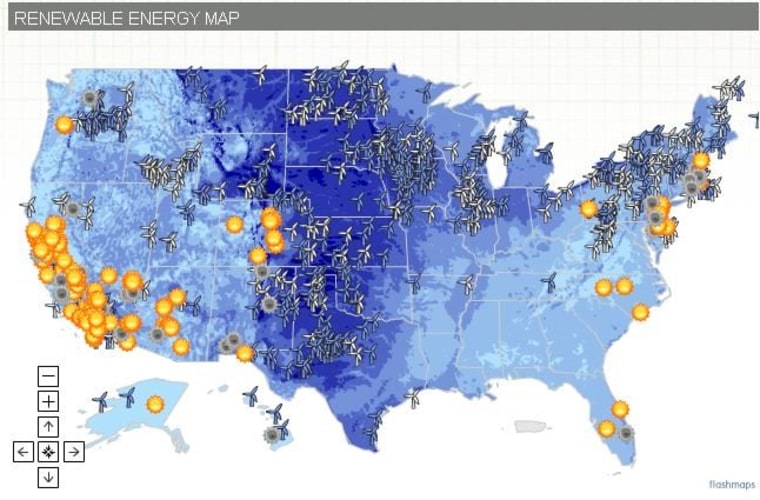We hear a lot of talk about the need to reduce the nation’s dependence on costly fossil fuels, but what’s actually being done about it?
The Natural Resources Defense Council has created an interactive map showing where some major types of renewable energy facilities have either already been built in the United States, or are being planned.
Want to know if your air conditioner may soon be powered by the sun? The new graphic will show exactly where the new solar facilities are planned, who is constructing them and what the capacity is. It also allows you to zero in on your state or even zip code.
The list includes wind, solar, advanced biofuels and geothermal facilities, as well as biodigesters. That’s energy based on animal manure.
The NRDC said it didn’t include hydropower in the chart because it was originally focusing on new renewable energy technologies, and there currently aren’t any new hydropower facilities under construction. However, the nonprofit environmental advocate said it may add those down the road.
Hydroelectric power is currently one of the major sources of renewable energy, according to the U.S. Energy Information Administration.
Although portions of the map are crammed with wind turbines and other symbols, for now at least renewable energy is still a very small portion of our overall energy consumption.
Renewable energy accounted for just 8 percent of our overall energy consumption in 2010, according to the U.S. Energy Information Administration. Nuclear energy accounted for another approximately 9 percent, while coal, petroleum and natural gas made up the rest.
